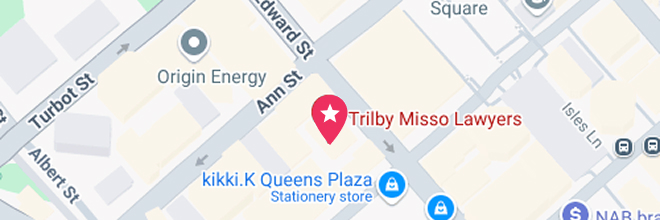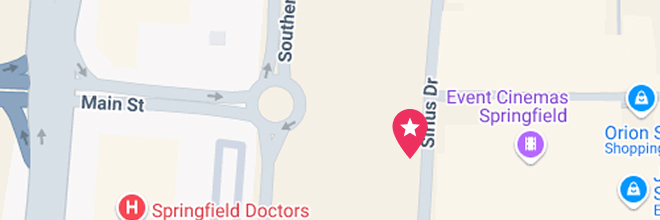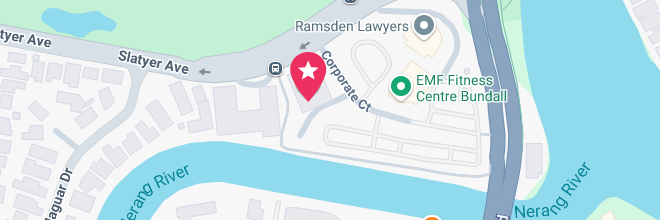Our Brisbane CBD Office
- Suite 400, Level 4/288 Edward St, Brisbane City QLD 4000
- (07) 3910 5470




When it comes to workplace injuries in Queensland, one question people often ask is: which profession has the most workers’ compensation claims? In other words, what jobs see the most people getting injured at work and filing a work injury claim? In this blog, we’ll dive into the latest WorkCover Queensland statistics (covering 2023 data) to find out which industries and occupations are topping the list for work injuries. We’ll also look at trends in both physical and psychological injury claims by profession between 2023 and 2025. All information is based on factual, up-to-date sources, so you can understand the real picture of work injury statistics in Queensland.
Health care and social assistance workers experience the highest number of workers’ compensation claims in Queensland. According to recent government data, the health care and social assistance industry accounted for about 15.5% of all work injury claims in the state (worksafe.qld.gov.au). This makes healthcare the number one sector for injury claims – roughly one in every six or seven claims comes from this field. These claims include nurses, aged care support workers, hospital staff, and others in caring professions. It’s a large industry with many employees, which partly explains why the total number of claims is so high. But it also reflects the challenging nature of healthcare jobs: staff often perform heavy lifting (like moving patients) and face hazards such as needle sticks or aggressive incidents, leading to many injured at work incidents.
Other professions with high workers’ compensation claim numbers include construction, manufacturing, and public safety roles. For example, construction workers consistently lodge a large share of claims each year – on the order of ten thousand or more in Queensland (worksafe.qld.gov.au). Construction sites have obvious physical risks (falls, machinery accidents, etc.), so it’s not surprising that construction is among the top sources of work injury claims. Manufacturing and transport jobs also contribute significantly to injury statistics, given the manual labor and use of equipment involved.
It’s worth noting that even some professions you might not think of as dangerous have seen a spike in injuries. The education and training sector (think teachers, teacher aides, etc.) saw one of the biggest jumps in workers’ compensation claims recently – a 16.3% increase from 2021–22 to 2022–23 (worksafe.qld.gov.au). This was the largest rise among industries, meaning more Queensland teachers and school staff are claiming injuries now than before. Many of these are due to incidents like slips, trips, falls, or even violence from students, as well as work-related stress. Likewise, the hospitality sector (accommodation and food services) experienced an 11.3% rise in claims in that period. So, while healthcare remains the profession with the highest total claims, injuries are an issue across a wide range of jobs – from building sites to classrooms to restaurants.
To put things in perspective, tens of thousands of Queensland workers are injured each year across various industries. In 2022 alone, over 92,000 work injury claims were lodged in Queensland (qlsproctor.com.au). That’s roughly one claim for every 30 workers in the state. Certain jobs just tend to have more risks and therefore more compensation claims. But what kinds of injuries are we talking about? Let’s look at the common injury types workers face.
The data shows that physical injuries – especially strains and sprains – are by far the most common type of work injury leading to a workers’ compensation claim. In fact, strains and sprains (often due to manual tasks like lifting, carrying, or repetitive motions) made up over a quarter (28.5%) of all injuries lodged in the Queensland workers’ comp scheme in 2021–22 (worksafe.qld.gov.au). The single most frequently injured body part is the back, which accounted for about 5% of all injury claims (worksafe.qld.gov.au). This makes sense: jobs with the highest claims (nursing, construction, warehouse work, etc.) often involve physical labor that can hurt your back or joints.
Some typical injuries in these high-claim professions include:
Muscle strains and sprained joints – e.g. a nurse injuring their back while moving a patient, or a construction worker straining a shoulder lifting materials.
Cuts and open wounds – common in construction, manufacturing, and hospitality kitchens (from tools, machinery, or knives).
Contusions and crush injuries (bruises or being hit by objects) – for instance, warehouse staff being struck by moving equipment or falling objects.
Fractures (broken bones) – can occur from falls from heights in construction or slips on wet floors in a hospital or restaurant.
Repetitive strain injuries – teachers or office workers might even get conditions like carpal tunnel syndrome from repetitive tasks, though these are less frequent than acute injuries.
No matter the profession, being injured at work can have serious consequences. High-risk jobs like agriculture and construction don’t always have the highest number of claims overall (because they employ fewer people than healthcare), but they do have high injury rates. For example, when adjusted for hours worked, the agriculture, forestry and fishing industry actually has the highest rate of serious injury claims in Australia – about 11.3 serious claims per million hours worked, nearly double the average rate (data.safeworkaustralia.gov.au). This shows that farming and similar jobs are quite dangerous on a per-worker basis, even if the total claims aren’t as numerous as in healthcare or construction.
The key takeaway is that physical injuries – particularly sprains, strains and other musculoskeletal injuries – dominate the claim statistics in whatever profession. These injuries might sound minor, but they can require time off work to heal. The average injured worker with a time-loss claim in Queensland is off work for around 72 days (about 10 weeks) (worksafe.qld.gov.au). And some injuries are much more severe, of course.
Now, beyond physical injuries, there’s another category getting increasing attention: psychological injuries. Let’s talk about those and see how common they are in high-risk professions.
Yes, mental health (psychological) injury claims are becoming more common in healthcare – and in several other professions as well. Overall, psychological injuries still make up a small portion of all workers’ compensation claims, but the numbers are growing. In Queensland in 2022, about 6% of all workers’ compensation claims were for psychological or psychiatric injuries. That’s roughly 1 in 16 claims – not a huge share, but significant enough to notice. WorkCover Queensland has reported a steady rise in these claims, noting a 27% increase in psychological injury lodgements since 2017.
Healthcare workers in particular do lodge mental health claims, although physical injuries (like the strains and sprains mentioned earlier) still far outnumber them. Consider what nurses, doctors, paramedics, and aged care workers have been through in recent years – high stress, long hours during the pandemic, exposure to trauma, and sometimes aggression from patients. These factors can lead to work-related psychological injuries such as PTSD, anxiety, or depression. For example, a nurse who witnesses frequent patient deaths or a paramedic dealing with horrific accidents may develop psychological trauma. Similarly, aged care and disability support workers can experience burnout and mental stress due to the emotional demands of their jobs.
So in the healthcare profession, mental health claims are definitely present and arguably “common” in the sense that many workers struggle with psychological strain. However, they are still a minority of total claims. One interesting statistic: psychological injuries are one of the few claim types where female workers outnumber male workers. In 2021–22, females accounted for about 56.9% of all psychological injury claims in Queenslandworksafe.qld.gov.au. This likely reflects the fact that female-dominated fields like nursing, teaching, and caring roles are seeing a lot of these stress and trauma-related claims.
Healthcare isn’t the only sector with notable psychological claims. Education is another big one – teachers and school staff often report work stress, burnout, or even trauma from violent incidents at school. For instance, hundreds of Queensland teachers have lodged claims for psychological injuries or stress related to occupational violence (such as being threatened or attacked by students or parents) (abc.net.auabc.net.au). First responders (police, firefighters, ambulance officers) are also well known to suffer higher rates of PTSD and other mental health issues due to the critical incidents they deal with. And even office workers can claim for work-related mental disorders if they’ve been through bullying, harassment, or extreme work pressure.
The trend is that psychological injury claims are on the rise across the board. They now account for roughly 1 in every 15 work claims in Queensland and this proportion is slowly increasing. These claims also tend to be more complex. The average duration of a psychological injury claim is much longer than for physical injuries – about 200 days off work on average, compared to around 72 days for all claim types. They also have higher costs per claim on average. This is because recovering from a mental health injury often requires therapy, time, and suitable duties, and it may be harder to return to work quickly.
In summary, while physical injuries happen more often in jobs like healthcare, construction, etc., psychological injuries are indeed a concern and are becoming more common, especially in high-stress professions. Healthcare workers do file mental health claims (for issues like trauma or burnout), and so do educators and emergency service workers. Employers and regulators are paying more attention to these issues now, encouraging mentally healthy workplaces just as much as physically safe ones.
Q: Which professions have the highest workers’ compensation claims in Queensland?
A: The latest stats show that the health care and social assistance sector has the highest number of claims – about 15% of all work injury claims in Qld (worksafe.qld.gov.au). This includes professions like nurses, aged care workers, doctors and hospital staff. Other high-claim industries are construction, manufacturing, and public administration/safety (which covers police, firefighters, etc.), each of which contributes a large share of injuries. Even the education sector has seen a sharp rise in claims recently, although its total is still behind health care and construction. Essentially, jobs that involve physical labor or high stress tend to have the most workers’ comp claims.
Q: Are psychological injury claims covered by WorkCover Queensland?
A: Yes. If you suffer a work-related psychological injury (such as workplace stress, PTSD, anxiety, or depression caused by your job), you can lodge a workers’ compensation claim for it. WorkCover Queensland does cover mental injuries, though they will assess the claim to ensure the injury is work-related. Psychological claims make up around 5–6% of all work claims in Queensland, and they’ve been increasing in recent years. Common scenarios include exposure to trauma (common in healthcare and emergency services), bullying or harassment at work, or extreme workload stress. Keep in mind that psychological claims can sometimes be challenging – they have a higher initial rejection rate than physical claims in Qld, but many are accepted on review. If you’re unsure, you can always seek legal advice to help with a psychological injury claim.
Q: Do I need a lawyer for a workers’ compensation claim, and what does “no win, no fee” mean?
A: Straightforward workers’ comp claims (like a routine injury where you take time off and come back) are often handled directly with WorkCover without needing a lawyer. However, if your claim gets complicated – for example, if it’s denied, or if you have a long-term injury and want to seek further compensation claim through common law (suing for damages) – you may benefit from a personal injury lawyer. “No win, no fee” is a common arrangement for these lawyers, meaning you don’t pay any legal fees unless you win your case. At Trilby Misso, for instance, we don’t charge you anything if you lose your claim. This helps injured workers pursue their rights without the fear of huge upfront costs. It’s always a good idea to get a free initial consultation to understand your options, especially if you’re facing a serious work injury situation.
WorkSafe Queensland – Workers’ Compensation Scheme Statistics 2022–23 (official data summary of Queensland work injury claims) worksafe.qld.gov.auworksafe.qld.gov.au
WorkSafe Queensland – Pocket Guide: Injury Trends by Industry (Breakdown of claims by industry and injury type in Qld) worksafe.qld.gov.auworksafe.qld.gov.au
Safe Work Australia – Key Work Health and Safety Statistics, 2023-2024 (national data on work injury rates and mental health claim trends) data.safeworkaustralia.gov.auqlsproctor.com.au
Which profession has the highest workers’ compensation claims? In Queensland, the data clearly points to the health care and social assistance industry – meaning jobs like nursing, aged care, and healthcare support – as the leader in work injury claims. This sector sees the most claims overall, likely due to its large workforce and the physically demanding nature of the work. Construction and similar manual trades also rack up thousands of injuries each year. Meanwhile, there’s an important trend to watch: psychological injury claims are rising across various professions, especially in healthcare, education, and emergency services. These mental health claims still form a small part of the whole, but they carry significant impacts for the affected workers. Ultimately, every worker deserves a safe workplace, whether they are a nurse lifting patients, a teacher managing a classroom, or a construction worker on a high-rise project. If you do get injured at work – physically or mentally – remember that workers’ compensation is there to support you. You have the right to make a work injury claim and get benefits to help you recover. And if you ever need legal help navigating a complex claim, you can reach out to a no win, no fee lawyer who will guide you without adding financial stress. Staying informed about work injury statistics and your rights is an important step in staying safe and protected on the job. Stay safe out there!
Kathryn is Trilby Misso’s Chief Executive Officer.
Meet KathrynUse this simple online tool and find out if you have a claim in less than thirty seconds. You can choose to remain anonymous.
Your next step is a small one. All you need to do is give us a call on 07 3910 5470 or complete this form here to arrange a quick chat.
During this initial conversation, we will:

We understand that taking legal action can be stressful, and we’ll do all we can to ease your concerns.
The chat can take place at our place, your place, or by phone. There is no cost, no pressure, and no obligation.
Call 07 3910 5470 or fill out this form, and we’ll get back to you within 2 hours (during business hours). We look forward to meeting you.
enquire now